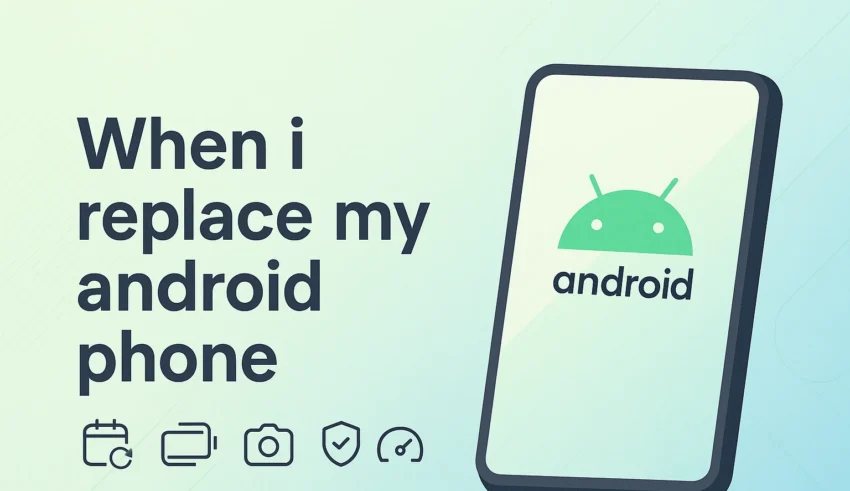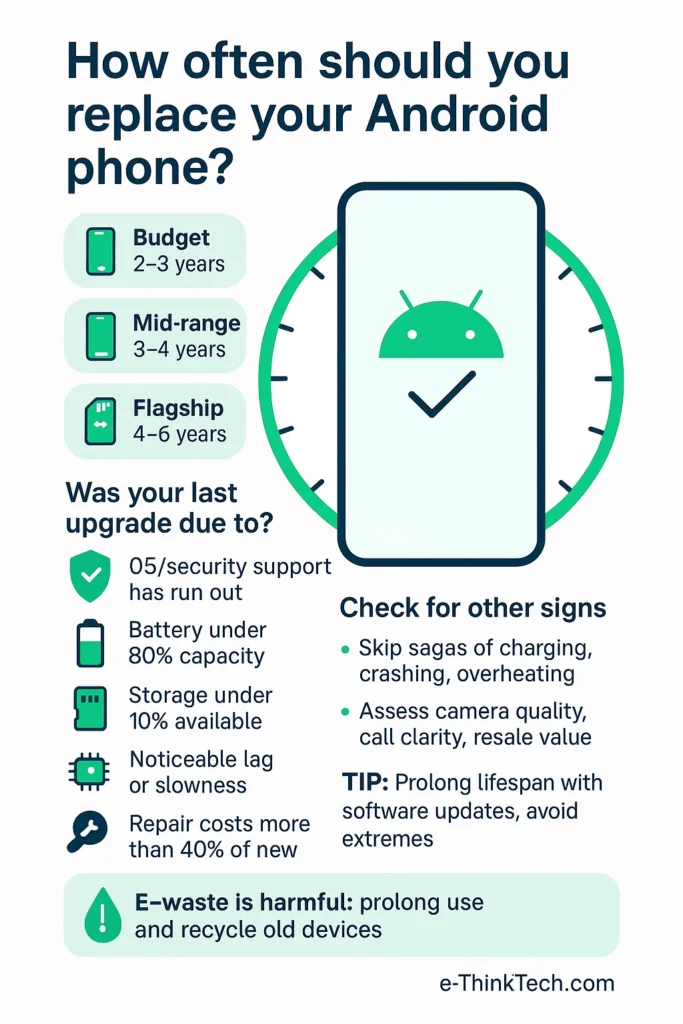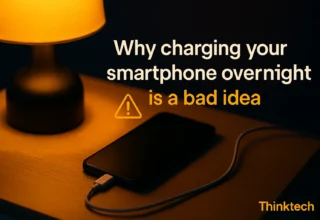
For most people, every 3–4 years is a sensible replacement rhythm. If your
security support has ended, your battery can’t last a day, performance stutters
in daily apps, or a repair costs over 50% of the phone’s value, it’s time to upgrade.
Otherwise, try a battery replacement first.
If you’ve been wondering how often you should replace your Android phone, you’re not alone.
Modern devices last longer than ever, but their lifespans are shaped by battery health,
software support, performance, storage,
hardware durability, and increasingly, sustainability.
This practical guide gives you a clear decision framework you can apply today, without hype or guesswork.
1) The clearest signals that it’s time to upgrade
Here are the most reliable, real-world triggers:
- Security support has ended. If your device no longer receives security updates, you should plan a replacement promptly.
- Battery health under ~80%. You need multiple top-ups per day, or the phone dies unexpectedly at 20–30%.
- Frequent stutters or freezes. Apps take several seconds to open, or the device reboots randomly.
- Storage is always full. Even after cleanup, updates fail or the camera refuses to record.
- Hardware faults. Broken camera, degraded microphones/speakers, swollen battery, or unreliable ports.
- Repair math fails. If fixing it costs more than half of the phone’s current value, upgrading is usually wiser.
Back up before symptoms worsen. When you first notice instability or battery swelling,
complete an encrypted backup to the cloud or a computer while the device is still reliable.
2) Software & security support: the upgrade anchor
Your phone’s safe lifespan is bounded by security patches. As a rule of thumb, most
mainstream Android phones receive several years of security updates. Exact timelines vary by
manufacturer and model. When your device falls out of support, upgrade timing becomes less about features
and more about basic safety.
How to check support on your phone:
- Open Settings → Security (or Security & privacy).
- Look for the Android security update date and Google Play system update.
- Check your manufacturer’s support page for your model’s update policy.
Once your model is out of security support, avoid installing banking apps or storing sensitive data.
Plan a migration to a supported device as soon as practical.
3) Battery health and charging reality
Lithium-ion batteries wear with cycles, heat, and time. After a few years, many phones fall below
~80% of original capacity and start to feel unreliable. Android doesn’t display battery
health universally; some manufacturers expose diagnostics, and reputable service centers can test it.
Battery-saving habits that prolong replacement:
- Keep the phone cool; avoid heavy gaming/charging in hot environments.
- Prefer slower charging overnight when you don’t need speed.
- Stop charging near 80–90% and avoid regular deep discharges to 0%.
- Use certified chargers and quality cables to reduce heat and stress.
If the rest of the device is fine, a battery replacement can add 1–2 years of life
at a fraction of the cost of a new phone—especially if water resistance and warranty can be preserved
via an authorized repair.
4) Performance, storage, and reliability
Performance degrades when newer apps demand more memory or when storage runs near capacity. Keep at least
10–20% free space. If routine tasks—camera launch, maps, messaging—consistently stutter
or crash, and a clean-up/reset doesn’t help, you’re likely ready for an upgrade.
Quick wins before you replace:
- Uninstall rarely used apps, especially those that run in the background.
- Move photos/videos off-device (cloud or computer) to free space.
- Disable or reduce animations in Developer options if necessary.
- Consider a factory reset after a full backup to clear accumulated cruft.
5) Repair vs. replace: the 50% rule
A practical heuristic is the 50% rule: if the repair cost (parts + labor) is
over half of the device’s current market value, replacement usually makes more sense,
especially if security support is ending soon.
Repairs that often make sense: battery swaps, charging port cleaning/replacement,
and camera glass fixes—when done with quality parts and proper sealing.
Repairs that rarely make sense on older models: premium OLED screen replacements,
motherboard work, or multiple simultaneous faults.
If security is current and the phone is otherwise fine, try a battery replacement first.
If support has ended or repair costs are high, upgrade.
6) Recommended cadence by user profile
| User Type | Typical Replacement Window | Why |
|---|---|---|
| Light users (calls, messaging, light browsing) | 4–5 years | Modest performance needs; battery and security support are the main limits. |
| Average users (camera, social, navigation, streaming) | 3–4 years | Balance of battery wear, new app demands, and camera improvements. |
| Power users (gaming, content creation, heavy multitasking) | 2–3 years | Performance and thermals become noticeable sooner; faster chip cycles matter. |
| Business-critical / field work | 2–3 years (with extended support plans) | Security and uptime commitments, accessory wear, and ruggedness requirements. |
7) Your quick decision checklist
Answer these honestly—if you tick two or more, you’re in upgrade territory:
- Security support: ended or ending soon.
- Battery: needs multiple top-ups or health ≤ ~80%.
- Performance: frequent stutters in everyday apps.
- Storage: under 10% free even after cleanup.
- Hardware: camera/port/speaker faults affecting daily use.
- Repair math: cost is > 50% of current device value.
8) What to look for in your next Android phone
- Long software commitment. Prefer models with multi-year OS upgrades and extended security patches.
- Battery & charging. 4500–5000 mAh or better, efficient chipset, and sensible fast-charge support.
- Repairability. Availability of official parts and authorized service protects longevity and safety.
- Cameras that fit your use. Stabilization, low-light performance, and reliable autofocus trump megapixel marketing.
- Connectivity. 5G bands you actually need, Wi-Fi 6/6E or 7 for crowded environments, eSIM if you travel.
- Storage & RAM headroom. Buy enough for 3–4 years (e.g., 256 GB if you shoot lots of video).
- Quality screen. Balanced brightness and PWM/flicker behavior if you’re sensitive, durable glass, and good oleophobic coating.
Try devices in person if possible. Weight, edges, vibration motor quality, and haptic typing feel make a big
difference over years of daily use.
9) Sustainability, data privacy, and resale
Extending a device’s life is good for your wallet and the planet. If your phone is still supported,
replacing the battery or fixing a simple fault can defer a full upgrade for years.
When you do move on, protect your data and the environment.
Before selling or recycling:
- Make two backups (cloud and local computer, if possible).
- Remove screen locks and log out from accounts.
- Disable Find My Device and remove the Google account.
- Encrypt (if not already), then factory reset.
- Use certified e-waste or trade-in programs, or donate responsibly.
10) FAQ
Is upgrading every year a good idea?
Usually not. Year-to-year gains are incremental. Most users get better value upgrading every 3–4 years unless a
critical feature lands (e.g., significantly longer support, major camera jump, or a safety fix).
Can I safely keep a phone after security support ends?
It’s risky. If you must, avoid sensitive apps, install no unknown apps, and keep a strict backup routine.
But the safer path is to upgrade to a supported device.
Is a battery replacement worth it?
Yes—if the rest of the phone is healthy and still supported. It’s the cheapest way to restore “like-new” endurance.
What about refurbished phones?
Great value when sourced from reputable sellers offering a fresh battery, clear support timeline, and return policy.
Does fast charging kill batteries?
It adds heat, which can accelerate wear. Used occasionally it’s fine; for daily use, slower overnight charging is gentler.
For most people, replacing an Android phone every 3–4 years balances safety, performance,
and sustainability. If your phone is still supported and otherwise fine, a new battery may be
all you need.









